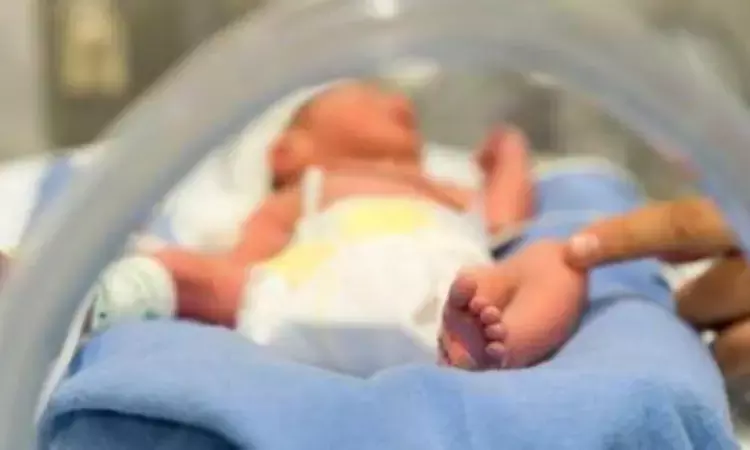- Home
- Medical news & Guidelines
- Anesthesiology
- Cardiology and CTVS
- Critical Care
- Dentistry
- Dermatology
- Diabetes and Endocrinology
- ENT
- Gastroenterology
- Medicine
- Nephrology
- Neurology
- Obstretics-Gynaecology
- Oncology
- Ophthalmology
- Orthopaedics
- Pediatrics-Neonatology
- Psychiatry
- Pulmonology
- Radiology
- Surgery
- Urology
- Laboratory Medicine
- Diet
- Nursing
- Paramedical
- Physiotherapy
- Health news
- Fact Check
- Bone Health Fact Check
- Brain Health Fact Check
- Cancer Related Fact Check
- Child Care Fact Check
- Dental and oral health fact check
- Diabetes and metabolic health fact check
- Diet and Nutrition Fact Check
- Eye and ENT Care Fact Check
- Fitness fact check
- Gut health fact check
- Heart health fact check
- Kidney health fact check
- Medical education fact check
- Men's health fact check
- Respiratory fact check
- Skin and hair care fact check
- Vaccine and Immunization fact check
- Women's health fact check
- AYUSH
- State News
- Andaman and Nicobar Islands
- Andhra Pradesh
- Arunachal Pradesh
- Assam
- Bihar
- Chandigarh
- Chattisgarh
- Dadra and Nagar Haveli
- Daman and Diu
- Delhi
- Goa
- Gujarat
- Haryana
- Himachal Pradesh
- Jammu & Kashmir
- Jharkhand
- Karnataka
- Kerala
- Ladakh
- Lakshadweep
- Madhya Pradesh
- Maharashtra
- Manipur
- Meghalaya
- Mizoram
- Nagaland
- Odisha
- Puducherry
- Punjab
- Rajasthan
- Sikkim
- Tamil Nadu
- Telangana
- Tripura
- Uttar Pradesh
- Uttrakhand
- West Bengal
- Medical Education
- Industry
Both fentanyl and lignocaine safe for preventing perioperative adverse respiratory events among pediatric patients: Study

Coughing during extubation is experienced by over 40% of patients undergoing surgery under general anesthesia. Any persistent coughing or breath-holding that results in airway obstruction and desaturation is considered a respiratory adverse event. Recent randomized double-blind pilot study compared the effects of intravenous (IV) lignocaine and fentanyl on neuromuscular recovery time and respiratory complications in 42 pediatric patients aged 2-8 years undergoing general anesthesia with neuromuscular blockade.
The primary objective was to compare the time to achieve a train of four (TOF) ratio of 0.9 and the time to extubation between the lignocaine and fentanyl groups. The secondary objectives were to compare the incidence of respiratory complications such as coughing, bucking, and laryngospasm.
The results showed that the time from reversal to achieving a TOF ratio of 0.9 was similar between the lignocaine (6.79 ± 3.03 minutes) and fentanyl (6.79 ± 3.31 minutes) groups (p=0.99). The time to extubation was also similar in both groups (8.14 ± 3.31 vs 9.19 ± 2.89 minutes, p=0.28). The incidence of bucking was slightly higher in the fentanyl group (23.8%) compared to the lignocaine group (9.5%), but this difference was not statistically significant (p=0.41). One patient in each group experienced laryngospasm and emergence delirium, which were successfully managed.
Conclusion and Recommendations
The study concluded that a single dose of IV lignocaine administered just before reversal did not prolong neuromuscular recovery time compared to fentanyl, with a similar low incidence of respiratory complications in pediatric patients undergoing general anesthesia with neuromuscular blockade. The authors recommend the use of neuromuscular monitoring in all pediatric patients receiving neuromuscular blockers, if feasible, to guide dosing and prevent residual neuromuscular blockade.
Key Points
Here are the 6 key points from the research paper summary:
1. This was a randomized double-blind pilot study that compared the effects of intravenous (IV) lignocaine and fentanyl on neuromuscular recovery time and respiratory complications in 42 pediatric patients aged 2-8 years undergoing general anesthesia with neuromuscular blockade.
2. The primary objective was to compare the time to achieve a train of four (TOF) ratio of 0.9 and the time to extubation between the lignocaine and fentanyl groups. The secondary objectives were to compare the incidence of respiratory complications such as coughing, bucking, and laryngospasm.
3. The results showed that the time from reversal to achieving a TOF ratio of 0.9 and the time to extubation were similar between the lignocaine and fentanyl groups.
4. The incidence of bucking was slightly higher in the fentanyl group compared to the lignocaine group, but this difference was not statistically significant. One patient in each group experienced laryngospasm and emergence delirium, which were successfully managed.
5. The study concluded that a single dose of IV lignocaine administered just before reversal did not prolong neuromuscular recovery time compared to fentanyl, with a similar low incidence of respiratory complications.
6. The authors recommend the use of neuromuscular monitoring in all pediatric patients receiving neuromuscular blockers, if feasible, to guide dosing and prevent residual neuromuscular blockade.
Reference –
Dhar M, Sharma R, Payal YS, Gupta V, Rawat J, Sogal S. Effect of single‑dose intravenous lignocaine versus fentanyl on neuromuscular recovery time after general anesthesia in elective pediatric surgery: A randomized controlled pilot study. J Anaesthesiol Clin Pharmaco 2024. DOI: 10.4103/joacp.joacp_460_23
MBBS, MD (Anaesthesiology), FNB (Cardiac Anaesthesiology)
Dr Monish Raut is a practicing Cardiac Anesthesiologist. He completed his MBBS at Government Medical College, Nagpur, and pursued his MD in Anesthesiology at BJ Medical College, Pune. Further specializing in Cardiac Anesthesiology, Dr Raut earned his FNB in Cardiac Anesthesiology from Sir Ganga Ram Hospital, Delhi.
Dr Kamal Kant Kohli-MBBS, DTCD- a chest specialist with more than 30 years of practice and a flair for writing clinical articles, Dr Kamal Kant Kohli joined Medical Dialogues as a Chief Editor of Medical News. Besides writing articles, as an editor, he proofreads and verifies all the medical content published on Medical Dialogues including those coming from journals, studies,medical conferences,guidelines etc. Email: drkohli@medicaldialogues.in. Contact no. 011-43720751


